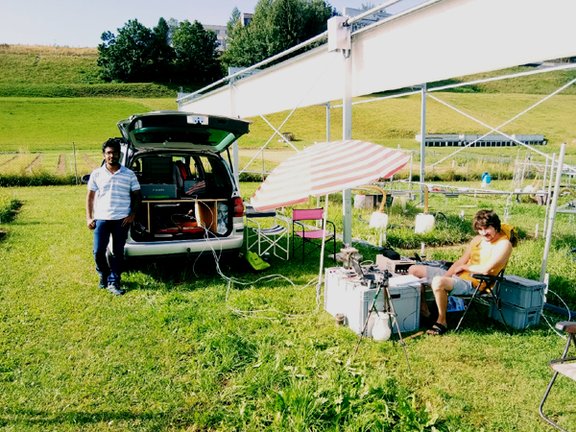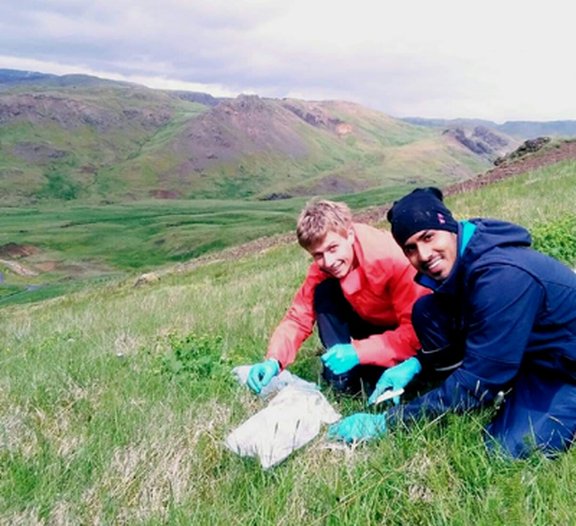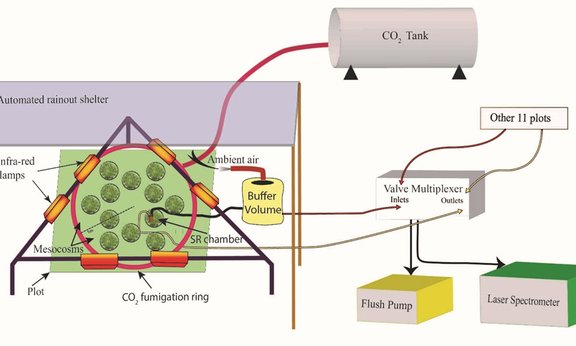What lured me to the field of earth science was several questions during my childhood. What was the Earth like in the past? Will it be different in the future? Such questions led me to Geology and Geoinformatics for my bachelor's degree. My bachelor’s thesis taught me that the land surface temperature has been increasing mainly due to change in our land-use. This led me to Earth sciences for my Masters, where I learned that we are changing the global climate by emitting CO2 into the atmosphere. Luckily, phytoplanktons in the oceans and plants in the terrestrial ecosystem are absorbing the majority of this carbon, thus mitigating climate change. Hence, for my master’s degree thesis, I looked into how the process of photosynthesis and respiration by phytoplankton reflects on stable isotopes of CO2 in the Antarctic ocean. For my PhD, I got an amazing opportunity to join the research group “Plant, Soil and Ecosystem Processes” (now “Functional Ecology”) at the University of Innsbruck, led by Prof. Michael Bahn, where I now study carbon dynamics under global change in terrestrial ecosystems.
The carbon uptake by plants during photosynthesis and the amount of carbon respired from the soil are the two major CO2 fluxes in terrestrial ecosystems. These two fluxes are linked through below-ground carbon allocation (i.e. the process through which the carbon photosynthesized in leaves is transferred to roots, which can then be respired by the roots or exudated from the roots as carbon substrates to the soil).

The first part of my PhD project studies how global change drivers (including warming, elevated CO2, and drought) affect CO2 uptake and soil respiration and the link between these two fluxes. The experiment for this was conducted at ClimGrass, a multifactor climate manipulation research facility located in Gumpenstein, Austria. Here, the future climate conditions were simulated by fumigating the grassland with CO2, increasing temperature by using infra-red lamps, and inducing drought conditions by using rainout shelters. We used the 13CO2 pulse labeling technique to study the fate of carbon from photosynthesis to respiration. Our results showed that warming and elevated CO2 amplified the drought effects on the amount of carbon allocated to soil respiration, while sustaining photosynthetic control on the diel respiration dynamics. After re-wetting, carbon uptake and the allocation to soil respiration recovered more rapidly under warming and elevated CO2 conditions (for details see the recent paper https://doi.org/10.1111/gcb.15628).

The effects of global change on the below-ground carbon allocation also alter soil organic matter dynamics. This is particularly applicable to the soils of the Northern ecosystems, which contain more carbon than the atmosphere and are the most vulnerable to warming. Soil warming increases microbial activity and microbial respiration, thus depleting the soil organic matter. At the same time, soil warming has been suggested to release nutrients such as nitrogen from the soil and can thereby increase plant growth and carbon allocation. Hence, for the second part of my PhD I studied how plant carbon allocation is directly affected by warming and indirectly through altered soil nitrogen availability. The experiment was carried out at the study sites FORHOT project in Iceland (www.forhot.is), where subarctic grassland plots are established along a natural geothermal soil warming gradient. To study the interactive effects of warming and nitrogen availability, half of the plots were fertilized. Using the 13CO2 pulse labeling technique, we found that warming decreased recently assimilated carbon in plants and increased its allocation to microbes and soil respiration. These results suggest that, surprisingly, plants are nitrogen-limited under warming and thus allocate more carbon below-ground in exchange for nutrients from microbes. These results have led to the third part of my PhD which tests the effects of labile carbon (analogous to root exudates) in warmed soils on the decomposition of soil organic matter.
I am very glad to be part of my research group and hope my studies can address some of the unanswered questions in the field of global change.
Kathiravan Mohamed Meeran
Research Group: Functional Ecology
Kathiravan.Mohamed-Meeran@uibk.ac.at

